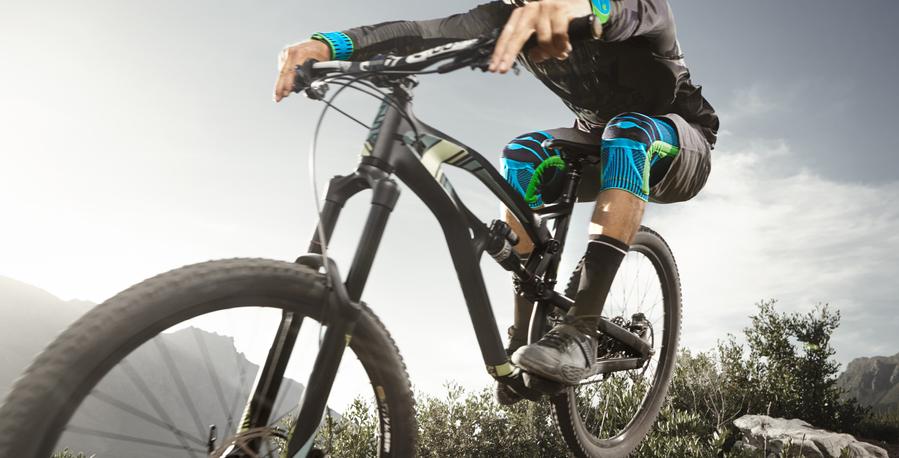About the most typical pains felt by more than one cyclist and the possibilities of their prevention in Ej! magazine. says physiotherapist Mārtiņš Seisums from the physiotherapy studio "Tore".
It is believed that the optimal amount of fluid intake per kilogram of body weight should be in the range of 30-60 ml.
Dating is a great activity - we have no doubt about that. Although more serious injuries in cycling are mostly caused by falls, there are some typical pains that more than one cyclist has felt.
LOW BACK PAIN AND DISCOMFORT
CAUSES OF PAIN
► Incorrect posture on the bike.
► Weak back and abdominal muscles. It increases the load on the lumbar vertebrae and intervertebral discs (manifested as a feeling of stiffness and pain in the lumbar region). Most often, pain is associated with muscle overload, and a person does not pay attention to it, but in the long term, intervertebral disc herniation and inflammation of the joints of the back belt and sacrum can occur.
AVOID!
► Warm up and warm up the back muscles before and after the rides.
► Takes the correct posture during the journey - adjusts the seat and steering wheel to the appropriate height. The back should be straight, so that the waist part does not curve outwards, the shoulder part feels free and is not excessively pulled up.
► Choose a softer seat, thus increasing the cushioning and reducing the shocks caused to the lower back when driving on uneven surfaces.
► Strengthen the abdominal, back and pelvic muscles. Start by strengthening the deep or postural (main) muscles, because they keep the back straight during the ride, thus not creating a big load on the phasic or superficial muscles.
► Performs back lumbar muscle stretching, massage, kinesiological taping. If you have severe pain in the lower back, you should consult a specialist.
WHAT TO REPLACE CYCLING WITH?
► By swimming (before swimming training you should consult a specialist to learn the correct technique).
► With caning, fast walking, which can turn into a slow run on soft surfaces (it is forbidden to run on asphalt or concrete).
CAUSES OF PAIN IN THE HANDS AND ELBOW JOINTS
Most often, the pain is associated with an incorrect position on the bike - the wrist is too bent back. This puts a lot of stress on the joints and the surrounding muscles, resulting in muscle overuse and/or inflammation of the joint.
Pain on the outer side of the elbow joint is associated with inflammation of the muscle tendons at the muscle attachment site. Occurs in case of overload of the forearm flexor muscles.
AVOID!
► Before the trip, warm up your wrists and elbow joints. After the ride - warm up.
► Choose the correct position of the bicycle handlebars. The wrists should be in as neutral a position as possible. Do not lean back excessively.
► Keep your hands on the steering wheel firmly, but relaxed, so as not to overload the muscles of the forearms during longer trips.
Keep your elbows slightly bent to equalize the impact on your wrists. ► If the pain is strong, use cold compresses, stretch the muscles of the forearms, massage the muscles of the forearms. You can go to a specialist and apply kinesiology tape to the wrist and/or forearm muscles, as well as use wrist orthoses, which will reduce the pain caused by impacts in the joints.
WHAT TO REPLACE CYCLING WITH?
Choose any other sport that does not put too much stress on the joints of the wrists and elbows, such as running.
PATELLOFEMORAL PAIN SYNDROME - PAIN IN THE FRONT OF THE KNEE, ABOVE OR BELOW THE KNEE CAP
CAUSES OF PAIN
► Overworked muscle of the front part of the thigh.
► Incorrect riding position on the bicycle. It increases the load on the knee joint, causing overload and pain.
AVOID!
► Warm up, cool down and stretch the front part of the thigh, the muscle (before and after the ride).
► Choose a bike suitable for your height.
► Take the correct posture while driving. pay special attention to the fact that the chair is adjusted to the correct height - the leg should be completely straight in the end position of the push-off. ► If pain is felt, a cold compress is recommended (about 15 min every 3-4 hours), and when lying in bed, the legs should be kept in an elevated position (the leg should be at the level of the heart, thus improving peripheral blood circulation and lymph flow towards the heart, which will reduce pain).
WHAT TO REPLACE CYCLING WITH?
► By walking or swimming, but only when the pain has subsided.
► In the period of acute pain, rest and specialist consultation are desirable.
magazine GO!

